Not Forgetting - Chapter 3, part 4: High Street and Albert Street
David Middleton and Sue Middleton
High Street
The western part of High St, between Barkestone Lane and Pinfold Lane
The pattern and distribution of commercial activity on High Street has remained much the same over the last 120 years. Most of this has been concentrated in the section from Belvoir Road down to the Barkestone Lane – Albert Street intersection. However there were two pre-war businesses to the west of Barkestone Lane.
Doubleday’s Builders (26)
In the first part of the 20th Century, Bottesford’s main building contractor, Horace Doubleday, was the main focus of commercial activity (besides farming), in the western part of High Street. His premises were at what is now No.67, on the southern side of High Street, opposite the junction with Pinfold Lane. The Book of Bottesford records that this house was built for John Brewitt around 1743. The Brewitt family occupied it for more than a century: William Brewitt, a coal dealer, was living there in 1863.
We do not know precisely when Horace Doubleday set up as a ‘builder and contractor’ there. However, between the two World Wars this business was a significant employer in Bottesford. They also manufactured and supplied artificial stone and building blocks. It is recalled that they originally produced these in the 1920s to avoid staff lay offs during the economic depression of those times. In about 1950, most of the Doubleday family emigrated to Canada.
The Ferns (27)
The Ferns is a Georgian farmhouse, but an old advertisement indicates that in the 1920s James Miller kept a refreshment room there, with a private lawn and garden, catering for cyclists and motorists.
Christmas and Chorlton’s garage (28)
Christmas and Chorlton’s garage sold fuel and undertook motor and bicycle repairs before the Second World War at least until May 1969. It is listed in Kelly’s Directory for 1928, selling B.P. Motor Spirit for 1s 3d a gallon. The business continues today as Woodhouse and Carman’s vehicle repair and MOT garage but the old bicycle shop has been demolished.
The Thatch (29)
‘The Thatch’, appropriately the only thatched building in Bottesford, opened as a restaurant sometime after 1939. In the 1920s it was the surgery of Dr Martin. It then became a private house for many years, but by 1979 it was a restaurant under the ownership of Angelo and Kate Bizzotto, offering an Italian-English-French menu. The present owners have developed the business further as a small hotel and restaurant.
Southern side of the High Street, from Belvoir Road to Barkestone Lane
Cottages on the corner of High Street and Belvoir Road (30)
The last hundred years has seen significant changes at the eastern end of the High Street opposite the Rutland Arms. The two cottages in the photograph still stand on the corner of High Street and Belvoir Road. Cycling became very popular at the turn of the 20th Century and the early photograph (above) possibly shows a cycle shop with adverts on the wall of the second cottage.
By the 1960s, the cottages had been combined into commercial premises. A Miss Welbo(u)rn(e) had lived in the first cottage, but full details are not available of all the householders, shops and trades that have occupied the buildings. However, by the 1960s, they had included a wet fish shop and a greengrocery run by Mr Graham Smith. The premises became a paper shop run by Kath and Harry Newtons, before Forbuoys of Nottingham took over the business and installed managers. They also opened a second paper shop in Queen Street for a short time in the 1980s. The newsagency later transferred to the Spar shop, opposite the Old Post Office. The building then housed a dress agency before becoming the offices of a local company. No longer commercial premises, it has recently been incorporated into a new development of flats.
Standley’s Shop, The Rutland Cafe and Monty’s Store (31)
Challand’s map of 1848 (see Chapter 9) and later directories show that this shop was once the village post-office, run by the Pickering family (see Chapter 8). By the time of later directories, from 1928 to 1942, the post-office had moved and Mrs Hannah Standley is named as the proprietor of the Rutland Café. Bottesford Amateur Operatic Society Programmes of 1925 and 1926 contain adverts stating that H. Standley is ‘a confectioner, caterer and grocer’. The Rutland Cafe was able to cater for large and small parties. It was open on Sundays, and served excursions and cyclists. From 1947 until 1956, Mr Montegriffo ran Monty’s Store and the Rutland Cafe.
A grocer, Cyril Roberts, took over the shop and it has been reported that this was the first supermarket in Bottesford. We have yet to establish if this was also the shop of R.W. & A Kirkham, who advertised in a 1968 edition of the Bottesford ‘Cross and Stocks’ magazine as ‘Your friendly Mace grocer’ with ‘Regular fortnightly offers at reduced prices’ and ‘Self selection with the personal service’. However, by the early seventies it had become one of a number of antique shops then in the village. When the antique shop closed, Nigel Ensor opened Rainbow Insurance, which included branches of W.H Brown estate agent and the Anglia Building Society. This was in about 1981.
When Rainbow Insurance vacated the premises, the shop was divided into two businesses – a women’s wear outlet and ‘The Curtain Pole’ selling home furnishings. It then lay unoccupied for a period of time until J.R. Mowers opened for business, selling and repairing lawn mowers. J.R. Mowers have recently relocated and the property has been converted back to a cafe, The Olde Rutland Cafe, its renovation based on the design of windows in the photographs taken in the 1940s.
Hart’s Garage and Store (32)
The site opposite the Rutland Arms has recently been redeveloped for residential properties. For many years, up to the early 1960s, two important village shops and later a garage had occupied this site.
Mr Hart sold petrol, paraffin and oil. He also charged the accumulators (electrical storage batteries) that were required for use in radios in those days. Fuel prices in the 1936/1938 period seem nothing now. R.O.P. (Russian Oil and Petroleum Co.) was priced at 11½d a gallon, just under 5p a gallon in today’s money. Shell and Esso were one old shilling a gallon, i.e. five pence a gallon!
A 1926 advertisement states that Mr Hart was ‘a grocer and General Dealer’. He sold tobacco and cigarettes, motor and cycle accessories, wireless parts of all descriptions, Dunlop and Michelin motor tyres (always in stock). Mr Hart was also an agent for ‘Ingersoll’ watches and clocks and a receiving agent for the Lady Bay Dye Works.
Ottley’s Shop (32 continued)
Mr Ottley followed Mr Hart as proprietor of the shop and sold provisions and groceries. When rationing ended, Michael Bradshaw remembers the pleasure of buying sweets without a ration book there.
The house next to the shop had a passage down which was the only public telephone in the village. There was a barred gate and if you wished to use the phone, you had to knock. The passage was also an approach to cottages to the rear of the shop. After the war, when housing was in short supply, the cottages were available for rent.
Mr Silkstone (father of Mrs Peggy Gamble, former landlady at the Rutland Arms) was a dentist whose surgery was on The Ropewalk in Nottingham. He also established a surgery in this building (his surgery sign is visible on the wall to the right of the passage) before he moved to Grantham Road. The buildings were demolished in the late fifties and a garage was built.
Nicholl’s Garage (33)
In 1962, the garage belonged to Dick Sharpe. By 1973, ‘Ted’ (full name uncertain) owned the garage, and then it became Nicholls of Bottesford. Gary Nicholls serviced and sold cars. He built a new showroom on part of the site and sold Renault cars. When he stopped selling cars around 2000, the showroom became, in turn, an office for Travel Case travel agents; a flower shop; a bed and mattress showroom. The aerial view of Nicholls’ Garage in the 1980s shows the redevelopment of the barns.
William Sutton, Grocer and Fellmonger (34)
In a directory of 1899, William Sutton, the village band-leader, is recorded as a grocer and a fellmonger. A fellmonger treats skins and renders down the fat. Mrs Dorothy Beedham recalls being in her grandfather’s shop, which had closed down by the 1920s. William Sutton died in 1924. The house was demolished after the Second World War and a modern bungalow now stands on the site.
Beyond (west) of William Sutton’s shop there was a terrace of 12 cottages, called Butcher’s Row, on the site where the Hand’s Walk bungalows have been built (named after the Hand Charity which owned half of Butcher’s Row).
William Miller’s Farm and Butchery (35)
Beyond Butcher Row was the entrance to the farm belonging to William Miller. He lived in the farmhouse and sold meat from a small building at the side. In the past 35 years, the house has been a surgery for Dr. Spalding and Dr. Glencross, the premises of Hollands Bros Hardware, offices for Andrew’s-Weatherfoil, then Susan’s Flowers and Petfood. The shop has now been converted back to a house. The small building next to the house was the butcher’s shop run by William Miller and Son.
Eric George Butchers
John George worked for William Miller and eventually bought the business in 1951. His son and daughter-in-law, Eric and Margaret George, then ran the butchery business until it was sold in 1991. A butchery business continued here for another five years. When it finally closed, the building was used by the Post Office as a sorting office from 1996 until recently, when it was demolished and replaced by part of a new house.
The Old Post Office (36)
In 1912, a Mr White was the postmaster as well as being a grocer and druggist. Directory entries of 1916 show that by this time Tom Silverwood had become the postmaster and, according to directory entries, his daughter Miss Eliza Ethel Silverwood continued to be postmistress until at least 1941. Mrs Freda Dunwell was postmistress in the seventies, followed by Mrs Gloria Shawcross.
When, after 2000, the Post Office moved to the Spar shop, both the sorting office and the Post Office were sold: the latter became a private dwelling and the former was demolished.
W.J. Roberts, Builders (37)
Before W.J. (Bill) Roberts’ offices were built on the High Street at the corner with Barkestone Lane, there was a row of cottages similar to those that are visible in the aerial photograph on Barkestone Lane itself. When W.J. Roberts moved to Devon Lane, the site was taken over by Bullock and Driffill in 1960. They extended the site and were suppliers of wooden roofing trusses and other wood products until they moved to Staunton late in 1998, after which the site was bought and redeveloped for housing.
Cafe and Antiques (38)
Mr Herbert Dunsmore lived in the house called ‘The Rosary’ on the corner of Barkestone Lane before the Duke of Rutland’s Sale in 1920. Then Mr Charles Holloway and family lived there, and ran a ‘Tea with Hovis’ café’. Charles Holloway was also listed as an antique dealer in Kelly’s Directory of 1928.
Northern side of the High Street – Rutland Arms to Albert Street
The Rutland Arms (39)
The layout of the Rutland Arms has changed during the last eighty years. Photographs taken in the 1920s show that the wall around the yard (the present car park) was much higher and had double gates. Apparently there were also two derelict cottages in the yard.
It was originally a Victorian pub with bars and a function room, its front door opening directly onto the High Street. Then, in the 1980s and 90s, a series of renovations were carried out which included moving the main entrance and building the dining room extension.
William Henry Goodson and George Herbert Goodson Junior were landlords in the twenties and thirties, followed in the fifties by Jack and Peggy Gamble – Mrs Gamble was the daughter of Mr Silkstone, the dentist, whose surgery was opposite.
No.10 High Street was the home of Mr F. Whillock, a house decorator in the twenties and thirties, who used his talents as musical director and scenery painter for the Bottesford Amateur Operatic Society. Mr Whillock died in 1938 but his wife lived there until her death in 1956.
The National Provincial Bank (40)
The National Provincial Bank, later to be known as the National Westminster Bank, opened its branch on Bottesford High Street in 1928. It was built by Horace Doubleday, on land purchased from Mr Charlie Marshall. The building stood on a piece of ground that was formerly part of a small walled paddock belonging to Mr Marshall (a traction engine driver), who lived at No. 14, the cottage adjacent to the Bank.
The paddock also contained a shed, where Mr Arthur Wing carried out shoe repairs. In the 1970s, the rear section of the paddock became a fenced allotment and the front section became a car park for the bank. The allotment area was sold in 1984 for the development of the Belvoir Vale Surgery, when the Walford Close bungalows were built.
Since the Bank closed in 1997, the building has been a ‘Physiotherapy and Fitness Centre’ (run by Alison Eaton) and ‘Jenny’s Gym’ (run by Jenny and Roger Hellen). It is now a hairdressing salon.
Norris & Sons, Builders (41)
No. 18 High St was built on the site of an earlier mud-walled house. Mr Ian Norris remembers that the family firm, Norris & Sons, used to slake lime in a large tank in the builders yard in order to prepare lime wash paint for houses. The firm later became John Norris and Sons, no longer wheelwrights but still builders and undertakers, making their own coffins on the premises.
Marjorie and Adeline Miller’s Store (42)
The present Spar Supermarket stands on the site of an earlier shop which opened directly onto the pavement, without a forecourt. Sisters Marjorie and Adeline Miller were listed in a 1936 directory as grocers. They sold home-made cakes, made by Miss Adeline Miller, and it is still remembered that “they were delicious!”
The shop was a VG store in the 1970s run by Elsie Walkling and Marjorie Manning. It was then bought by Margaret and Bill Ellemore, followed by Jason and Julie Wall: it became Wall’s General Store, a Happy Shopper store. GT News bought the shop and re-developed it as a Spar supermarket, incorporating first the newsagents and then the Post Office.
The Gas Show Rooms (43)
The single-storey building on the corner of High Street and Albert Street was demolished to clear the view for the builder’s lorries gaining access to Albert Street during the development of the Church View estate in the 1980s. It had been the Gas Show Rooms during the fifties, before Mrs Parry from Easthorpe opened an antique shop there in the early 1970s. It may also have been a shoe repair shop and possibly a shop selling electrical goods as well as fruit and vegetables.
Albert Street
Albert Street, which used to be called Back Street, was named to commemorate the death of Prince Albert in 1861. Curiously, it was still called Back Street on the village map published in 1884, suggesting that this map was originally drawn before 1861.
Forge Cottage, No.7 Albert St, was owned by Thomas Pickering, the village ironmonger in the mid 19th Century: there may well have been a forge here. The building behind No.7 (44) used to house the Salem Independent Chapel, but after 1924 became ’Southbourne’, a private house where in the 1930s Miss Hester Tuxford wrote ‘Cookery for the Middle Classes: with Special Chapter on Vegetarian Cookery & Useful Hints on Gas Stove Cooking’, which is still in press!
Further along the street is a group of three cottages making sides of a small square. The one at the back belonged to farmer William (Billy) Parnham, but the second end-on cottage, No.21 (45), was the premises of baker Richard Sherwin at least from 1877 until 1912. Records also show that master baker John Lane had been living in the street in 1851 and again in 1863, probably in this same house.
On the opposite, eastern side of the street, Walford Close was built by Melton Borough Council in the 1980s, on land formerly belonging to Mr Parnham. In addition to housing, two surgeries were built at either end (the Belvoir Vale and Woll Surgeries). The Woll Surgery, now part of the Welby Practice, is in a yard which opens off Walford Close and is also behind a locked metal gate on Albert St. Next to this surgery is the pharmacy which issues prescriptions to Welby patients and off-the-shelf medicines to all-comers (the Belvoir Vale Surgery has its own dispensary). The Belvoir Pharmacy has been run by Co-op Pharmacies since 2006.
Coal Merchants
Coal unloaded at the station yard was used by Bottesford gas works and the two brickyards (see chapter 8). It was also provided to domestic users by local coal merchants. James Edward James is listed as the Bottesford ‘coal dealer’ in Kelly’s Directory in 1908, and also in 1912 when a second ‘coal dealer’ George Wilson Rose is listed in Easthorpe. In the inter-war period, Thomas Guy Lovett was the only local ‘coal dealer’ listed by Kelly’s Directory, at first in Bottesford (1928, 1932) and then in Easthorpe (1936, 1941). Guy Lovett is well-remembered, still making deliveries by horse and cart in the 1950s from his yard on Manor Road, Easthorpe. After the Second World War a second coal merchant, Charles Thomas Samuel, made deliveries from his former haulage contracting yard off Pinfold Lane.


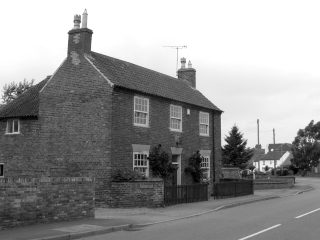
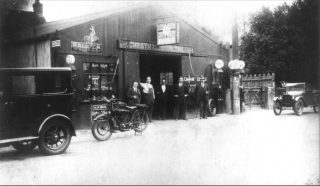
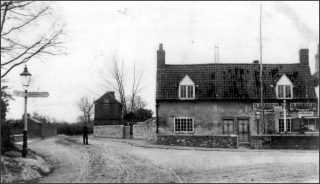
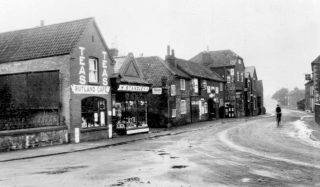
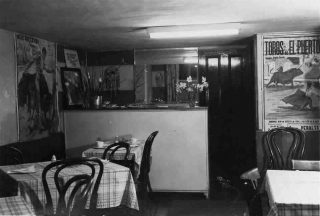
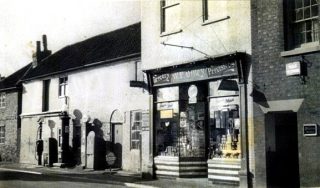
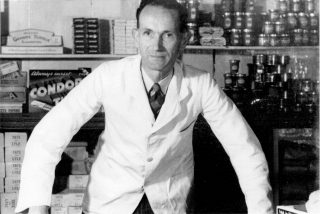
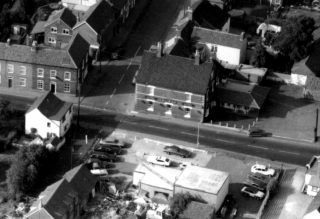

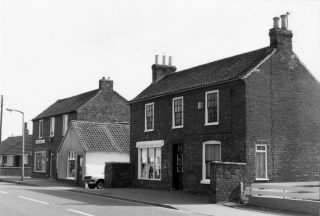
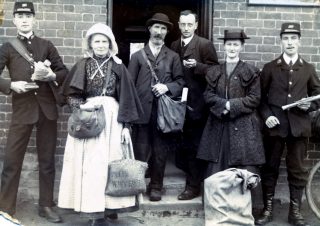
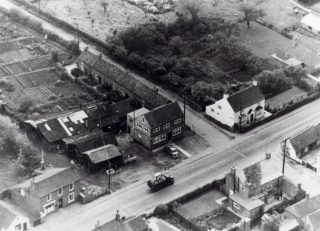
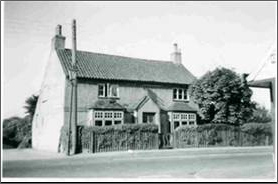
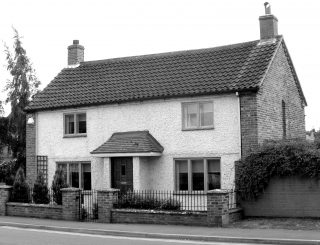
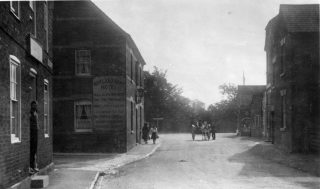
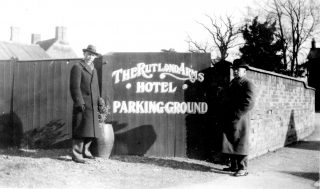
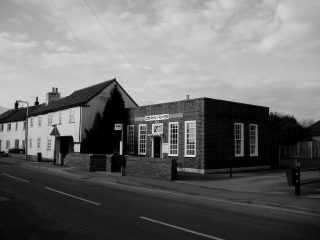
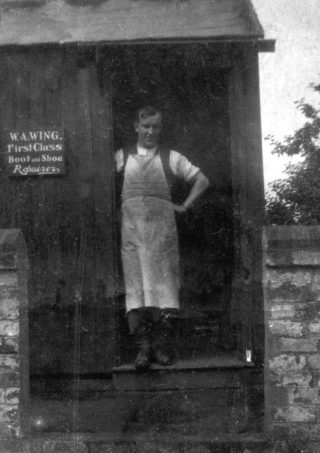
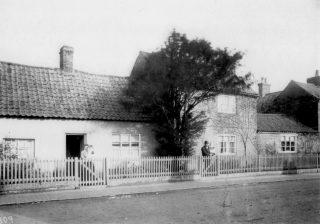
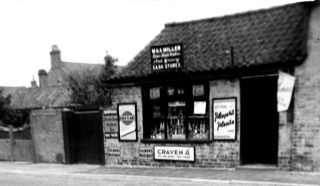
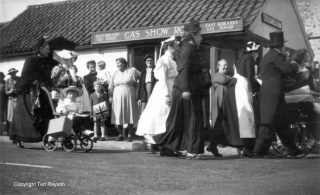
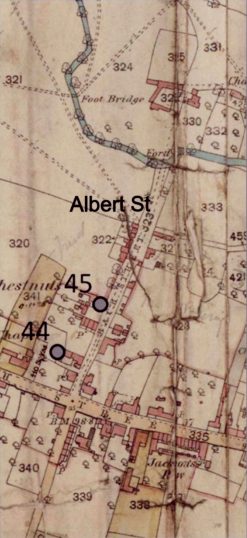
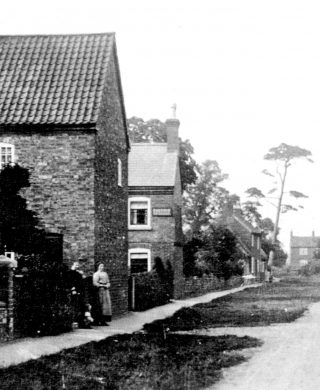








Comments about this page
My grandfather was Cyril Roberts so it’s lovely to read about him. My nanna told me that they also owned a row of cottages in Bottesford.
Add a comment about this page